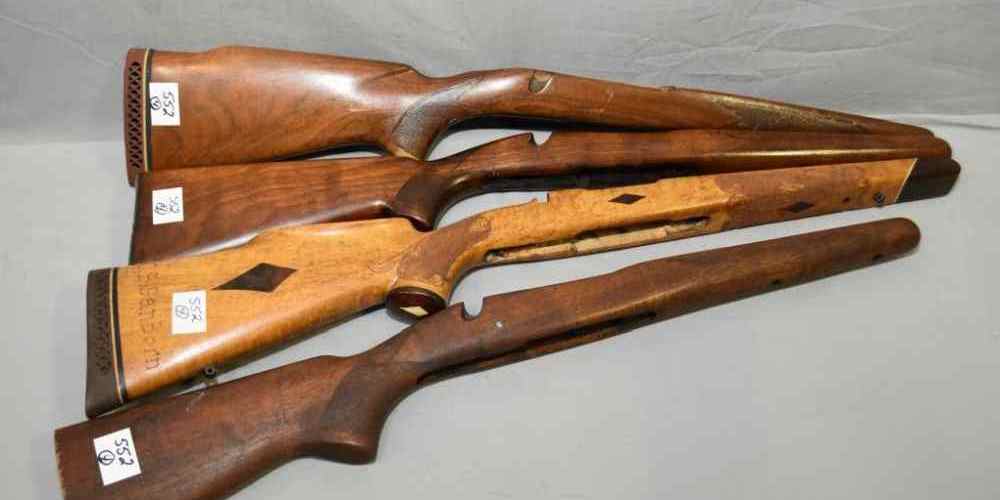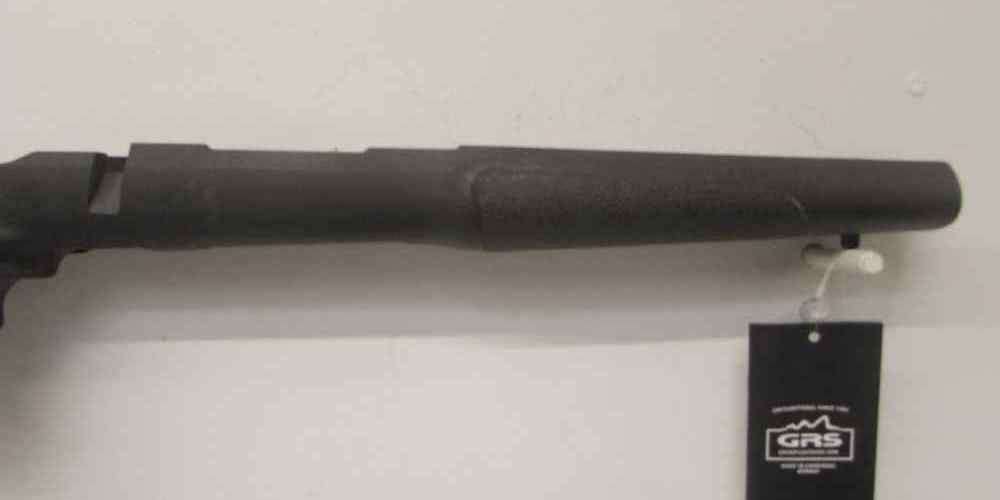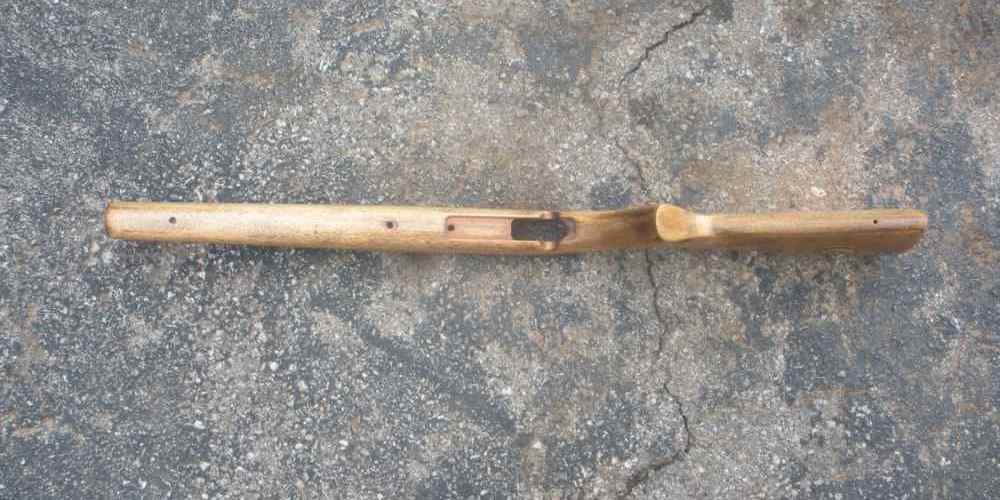“Finding the perfect balance between comfort and precision.”
Pros and Cons of Adjustable Rifle Stocks
Adjustable rifle stocks have become increasingly popular among shooters in recent years, offering a range of benefits and drawbacks that shooters should consider before making a purchase. These stocks allow for customization of the length of pull, cheek weld, and even the angle of the stock, providing a more comfortable and personalized shooting experience. However, there are trade-offs to consider when opting for an adjustable stock, including added weight, potential for decreased durability, and increased complexity in operation.
One of the main advantages of adjustable rifle stocks is the ability to tailor the fit of the rifle to the shooter’s body. This can lead to improved accuracy and comfort, as a properly fitted stock can help reduce recoil and improve shooting form. Additionally, adjustable stocks can accommodate shooters of different sizes and body types, making them a versatile option for a variety of users.
Another benefit of adjustable rifle stocks is the ability to easily switch between shooting positions. Whether shooting prone, standing, or from a bench rest, an adjustable stock can be quickly adjusted to provide the best shooting position for the situation. This can be especially useful for hunters who may need to quickly adapt to different shooting scenarios in the field.
However, there are trade-offs to consider when opting for an adjustable stock. One potential downside is the added weight that comes with the adjustable mechanisms. While this may not be a significant issue for some shooters, those who prioritize a lightweight rifle for long treks or extended shooting sessions may find the added weight to be a drawback.
Additionally, adjustable stocks may be more prone to damage or wear over time compared to traditional fixed stocks. The moving parts and mechanisms of an adjustable stock can be more susceptible to wear and tear, potentially leading to malfunctions or decreased reliability. Shooters who prioritize durability and longevity in their firearms may want to carefully consider the trade-offs of an adjustable stock.
Another consideration is the increased complexity in operation that comes with adjustable stocks. While most adjustable stocks are relatively easy to use, shooters may need to spend some time familiarizing themselves with the adjustments and finding the right settings for their shooting style. This can be a learning curve for some shooters, especially those who are used to traditional fixed stocks.
In conclusion, adjustable rifle stocks offer a range of benefits for shooters looking to customize their shooting experience. From improved fit and comfort to versatility in shooting positions, adjustable stocks can enhance the shooting experience for many users. However, shooters should carefully consider the trade-offs of added weight, potential for decreased durability, and increased complexity in operation before opting for an adjustable stock. By weighing these factors against the benefits, shooters can make an informed decision on whether an adjustable stock is the right choice for their needs.
Impact of Adjustable Rifle Stocks on Accuracy
Adjustable rifle stocks have become increasingly popular among shooters of all levels, offering a customizable option for achieving the perfect fit and feel for each individual. While the benefits of adjustable stocks are numerous, there are also trade-offs to consider when it comes to accuracy. In this article, we will explore the impact of adjustable rifle stocks on accuracy and discuss how shooters can optimize their performance with these versatile accessories.

One of the key advantages of adjustable rifle stocks is the ability to customize the length of pull, cheek weld, and overall fit of the rifle to the shooter’s body. This can greatly improve comfort and ergonomics, allowing for better control and stability while aiming and firing. However, the trade-off for this increased comfort and customization is the potential for decreased accuracy if not properly adjusted.
When it comes to accuracy, consistency is key. Any changes to the stock’s settings can affect the shooter’s natural point of aim, eye relief, and overall shooting position. This can lead to inconsistencies in shot placement and groupings, ultimately impacting the shooter’s ability to hit their target consistently. It is important for shooters to take the time to properly adjust their adjustable rifle stocks to ensure a consistent and repeatable shooting position.
Another trade-off to consider with adjustable rifle stocks is the added weight and complexity they can bring to the rifle. While adjustable stocks offer versatility and customization, they can also add bulk and weight to the firearm. This can affect the balance and handling of the rifle, potentially impacting the shooter’s ability to maintain a steady aim and absorb recoil effectively.
To mitigate these trade-offs and optimize accuracy with adjustable rifle stocks, shooters should take a systematic approach to adjusting and fine-tuning their setup. Start by ensuring the stock is properly mounted and secured to the rifle, with all adjustments made according to the shooter’s preferences and shooting style. Experiment with different settings to find the optimal fit and feel for your body, making sure to maintain consistency in your shooting position and technique.
Additionally, shooters should practice proper shooting fundamentals, including proper grip, stance, and trigger control, to maximize accuracy with adjustable rifle stocks. Consistent practice and training will help shooters develop muscle memory and improve their overall marksmanship skills, regardless of the stock configuration.
In conclusion, adjustable rifle stocks offer shooters a versatile and customizable option for achieving the perfect fit and feel for their individual needs. While there are trade-offs to consider when it comes to accuracy, with proper adjustment and practice, shooters can optimize their performance with these versatile accessories. By taking the time to fine-tune their setup and practice proper shooting fundamentals, shooters can maximize their accuracy and precision with adjustable rifle stocks.
Adjustability vs. Stability in Rifle Stocks
Adjustable rifle stocks have become increasingly popular among shooters in recent years due to their versatility and customization options. However, with this added adjustability comes a trade-off between flexibility and stability that shooters must consider when choosing a rifle stock for their needs.
One of the main benefits of adjustable rifle stocks is the ability to customize the fit of the stock to the shooter’s body. This can help improve accuracy and comfort, as a properly fitted stock can reduce recoil and improve shooting posture. Additionally, adjustable stocks can accommodate shooters of different sizes and body types, making them a versatile option for a wide range of users.
On the other hand, the adjustability of rifle stocks can also introduce potential stability issues. A stock that is not properly secured or adjusted may shift during shooting, affecting accuracy and consistency. This can be particularly problematic for precision shooting or long-range shooting where even small movements can have a significant impact on shot placement.
To mitigate these stability issues, shooters should ensure that their adjustable rifle stock is properly installed and adjusted according to the manufacturer’s instructions. Regular maintenance and checks can help prevent any loosening or shifting of the stock during use. Additionally, shooters should practice proper shooting techniques to minimize any potential movement of the stock during shooting.
Another trade-off to consider with adjustable rifle stocks is weight. While adjustable stocks offer flexibility in terms of fit and customization, they can also add extra weight to the rifle. This can be a concern for shooters who prioritize mobility and maneuverability, as a heavier stock can make the rifle more cumbersome to carry and handle.
To address this trade-off, shooters can opt for lightweight adjustable stocks made from materials such as polymer or carbon fiber. These materials offer durability and strength while keeping the overall weight of the rifle to a minimum. Additionally, shooters can choose adjustable stocks with minimalistic designs that prioritize weight savings without sacrificing adjustability.
In conclusion, the trade-offs of adjustable rifle stocks lie in the balance between flexibility and stability, as well as weight considerations. Shooters must carefully weigh these factors when choosing a rifle stock to ensure that it meets their needs and preferences. By properly installing and maintaining their adjustable stock, shooters can enjoy the benefits of customization without compromising on stability or weight. Ultimately, the decision to use an adjustable rifle stock comes down to personal preference and shooting style, so shooters should experiment with different options to find the best fit for their needs.
Ergonomics and Comfort with Adjustable Rifle Stocks
Adjustable rifle stocks have become increasingly popular among shooters looking to customize their firearms for improved ergonomics and comfort. These stocks offer a range of benefits, allowing users to adjust the length of pull, cheek weld, and even the angle of the stock to suit their individual preferences. While adjustable stocks can greatly enhance the shooting experience, there are also some trade-offs to consider when opting for this customization.
One of the primary advantages of adjustable rifle stocks is the ability to achieve a more comfortable shooting position. By adjusting the length of pull, shooters can ensure that the rifle fits them properly, reducing strain and fatigue during extended shooting sessions. Additionally, being able to adjust the cheek weld can help improve sight alignment and reduce the likelihood of developing a sore neck or shoulder from improper positioning.
Another benefit of adjustable rifle stocks is the ability to accommodate shooters of different sizes and body types. This can be particularly useful for firearms instructors or range officers who may need to share a rifle with multiple users. By simply adjusting the stock to fit each shooter, it becomes easier to maintain consistency in shooting form and accuracy across a variety of individuals.
However, there are some trade-offs to consider when using adjustable rifle stocks. One potential downside is the added weight and complexity that comes with these customizable features. Adjustable stocks often include additional components such as sliding mechanisms, locking levers, and adjustment knobs, which can add bulk and weight to the rifle. This may not be a significant issue for some shooters, but those who prioritize lightweight and streamlined firearms may find adjustable stocks to be less than ideal.
Another trade-off to consider is the potential for decreased durability and reliability with adjustable stocks. The moving parts and mechanisms that allow for adjustment can be more prone to wear and breakage over time, especially with frequent use. This could result in a less stable shooting platform and may require more maintenance and upkeep to keep the stock functioning properly.
Despite these trade-offs, many shooters find the benefits of adjustable rifle stocks to outweigh the drawbacks. The ability to customize the fit and feel of the rifle can greatly improve shooting comfort and accuracy, making it a worthwhile investment for those who prioritize ergonomics and performance.
In conclusion, adjustable rifle stocks offer a range of benefits for shooters looking to customize their firearms for improved ergonomics and comfort. While there are trade-offs to consider, such as added weight and complexity, the ability to achieve a more comfortable shooting position and accommodate shooters of different sizes can make adjustable stocks a valuable addition to any firearm. Ultimately, the decision to use an adjustable stock will depend on individual preferences and priorities, but for many shooters, the advantages far outweigh the drawbacks.
Customization Options with Adjustable Rifle Stocks
Adjustable rifle stocks have become increasingly popular among shooters looking to customize their firearms for a more comfortable and accurate shooting experience. These stocks offer a range of benefits, including the ability to adjust the length of pull, cheek weld, and even the angle of the stock to suit the shooter’s preferences. However, like any customization option, adjustable rifle stocks come with their own set of trade-offs that shooters should consider before making a purchase.
One of the main advantages of adjustable rifle stocks is their versatility. With the ability to adjust the length of pull, shooters can ensure that their rifle fits them perfectly, which can lead to improved accuracy and comfort. Additionally, being able to adjust the cheek weld can help shooters achieve a proper sight picture, further enhancing their shooting experience. The ability to customize the angle of the stock can also be beneficial for shooters who prefer a more upright or relaxed shooting position.
However, these benefits come with some trade-offs. One of the main drawbacks of adjustable rifle stocks is their added weight and complexity. Because adjustable stocks have moving parts and mechanisms, they tend to be heavier than traditional fixed stocks. This added weight can affect the balance of the rifle and may make it more cumbersome to carry and maneuver, especially for shooters who need to move quickly or shoot from unconventional positions.
Another trade-off to consider is the potential for decreased durability. Adjustable stocks are more prone to wear and tear than fixed stocks, as the moving parts can become loose or damaged over time. This can lead to a decrease in overall performance and reliability, which is something shooters should keep in mind when deciding whether to invest in an adjustable stock.
Additionally, adjustable stocks can be more expensive than traditional fixed stocks. The added features and customization options come at a cost, and shooters should be prepared to pay a premium for these benefits. For shooters on a budget, this may be a significant factor to consider when weighing the pros and cons of adjustable rifle stocks.
Despite these trade-offs, many shooters find that the benefits of adjustable rifle stocks outweigh the drawbacks. The ability to customize their rifle to fit their unique preferences and shooting style can make a significant difference in their overall shooting experience. By carefully considering the trade-offs and making an informed decision, shooters can determine whether an adjustable stock is the right choice for them.
In conclusion, adjustable rifle stocks offer a range of customization options that can enhance a shooter’s comfort and accuracy. However, these benefits come with trade-offs, including added weight, decreased durability, and higher cost. Shooters should carefully consider these factors before investing in an adjustable stock to ensure that it meets their needs and preferences. Ultimately, the decision to use an adjustable stock will depend on the individual shooter’s priorities and shooting style.






